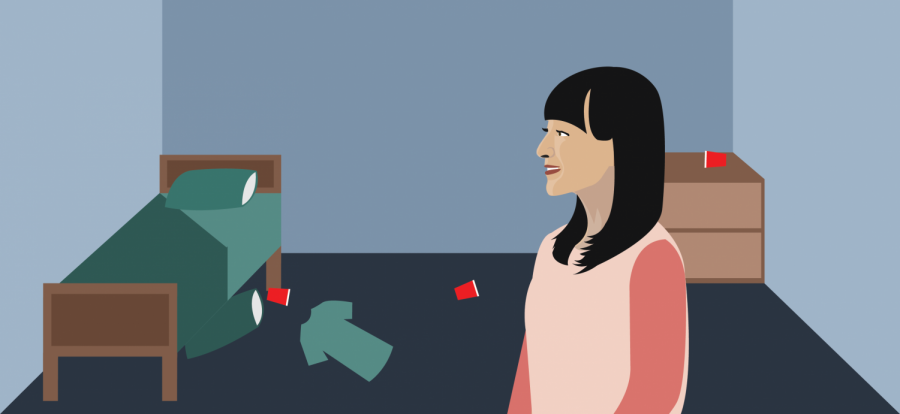Fraternity puts Marie Kondo methods to test
February 18, 2019
A new Netflix series, “Tidying Up with Marie Kondo,” has been sweeping the nation (and my social media feed), with the host helping others magically clean their living spaces. I was initially confused by the oversized celebration over decluttering, but I soon remembered the mess that is my tiny bedroom — mounds of unsorted items filling laundry baskets, groceries stacked wherever they fit and a microwave partially blocking my doorway.
I have been largely unsuccessful at cramming my belongings into a small fraternity dorm, so I decided to apply Kondo’s techniques and try out this potential solution.
As I began my research, I learned Kondo is a professional organizer from Japan and made a name for herself in 2014 with “The Life-Changing Magic of Tidying Up,” a wildly successful self-help book. I listened to the audiobook and enjoyed it as she weaved in amusing stories of herself and her clients alongside the KonMari Method, Kondo’s eponymous organizational philosophy. The two episodes of her television show I saw — which had a charm and personality belonging on TLC — focused more on her clients but displayed the same approach to tidying.
In both formats, Kondo breaks down her method into two broad steps: discarding and storing. The first requires rigorous testing of every item in the house, keeping only what “sparks joy” and trashing everything else. After only the essentials remain, they are assigned a permanent place in the room.
The KonMari Method includes more useful advice and tips than I can list, the most novel being the vertical storage of clothes in dresser drawers to keep them all visible. But its most notable characteristic is the near-spiritual way Kondo treats homes and their clutter. She instructs clients and readers to thank each object for fulfilling its service, especially before discarding it.
Get The Daily Illini in your inbox!
Empowered by Kondo’s comprehensive approach, I began my tidying with my clothes, pulling them all out of my small closet and considering my feelings toward each. It felt strange to thank old shirts as I tossed them in a discard box, but I persisted and eventually appreciated what felt like a genuine interaction with my belongings. By the end, I had rid about two dozen articles of clothing from my wardrobe.
The same process continued with each new category, like books, papers and so on. I was surprised at all the items I had kept out of a sense of obligation or I’ll-use-this-someday-itis. Even personal items like birthday cards and gifts were joylessly taking up space, which I noticed only while following Kondo’s instructions. By the end of the week, I filled a huge box of items for donation and emptied my trash can nearly a dozen times.
My storage step mostly consisted of finding the right containers for my belongings, like a Ziploc bag for my cables and a plastic bin for my food, and assigning them permanent homes. It was a relatively easy process, but my room sometimes had trouble cooperating. I have no dresser and instead put my clothes on shelves, for instance, and it’s impossible to stack anything vertically in those. Unfortunately, not every tip was helpful.
Although I couldn’t follow through on the KonMari Method perfectly, I completed the exercise with more floor space and less clutter than I’ve ever seen. I have a few items left to sort through, but I have been worrying much less about organization and understand the hype around Kondo.
In my mind, the chores themselves are not nearly as interesting as the ideology they embody. Kondo’s instructions, particularly the focus on “sparking joy,” exude the essence of minimalism, which looks to preserve only what is necessary (for living in a dorm, in this case).
This contrasts with the common, perhaps instinctual mindset to keep everything that has some sort of value. But by hoarding this excess value, the KonMari Method dictates, we get distracted from the most important and meaningful things in our lives.
Kondo’s tidying teaches us how to inhabit the home not just cleanly but also mindfully. I’ve been able to maintain that practice in the few days since I finished and being able to store everything comfortably in my tiny bedroom after months of failing truly borders on the magical. Although Kondo’s material is geared toward full houses and apartments, I believe anyone can benefit from a little tidying up.
Zack is a junior in Engineering.







